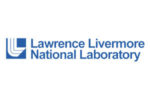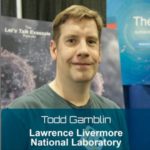Researchers from Lawrence Livermore National Laboratory (LLNL) from the lab’s Innovation and Partnerships Office and colleagues who help them commercialize technologies have won three national technology transfer awards this year from the Federal Laboratory Consortium (FLC), the most national awards the lab has won in a year in the past 36 years. The winners will […]
LLNL Event Encourages Growth of Women in Data Science
March 17, 2021 — Coinciding with International Women’s Day on March 8, Lawrence Livermore National Laboratory’s 4th Women in Data Science (WiDS) regional event brought women together to discuss successes, opportunities and challenges of being female in a mostly male field. The Lab’s first-ever virtual WiDS gathering attracted dozens of LLNL data scientists as well as some […]
Kim Budil Named 1st Woman Director of LLNL
Kim Budil has been named director of Lawrence Livermore National Laboratory (LLNL). Charlene Zettel, chair of Lawrence Livermore National Security, LLC (LLNS), which manages the laboratory for the Department of Energy’s (DOE) National Nuclear Security Administration (NNSA), made the announcement to lab employees today. Budil will begin her new role on March 2. She will be Livermore’s 13th director since it was established […]
AMD-Supermicro-Cornelis (Omni-Path) ‘Mammoth’ Cluster at LLNL Targets COVID-19
Lawrence Livermore National Laboratory and partners AMD, Supermicro and Cornelis Networks have installed a high performance computing cluster with memory and data storage capabilities targeting data-intensive COVID-19 research workloads. The Cornelis interconnect used in the “Mammoth” cluster is based on Intel Omni-Path Architecture (OPA) technology, which Intel announced last year it would no longer support […]
Nearly 1000 AMD GPUs Added to NNSA’s ‘Corona’ Cluster for COVID-19 Research
AMD and Supermicro have upgraded the “Corona” cluster at Lawrence Livermore National Laboratory for COVID-19 drug discovery and vaccine research. The addition of nearly 1,000 AMD Radeon Instinct MI50 GPU accelerators to the National Nuclear Security Administration’s Corona system (named for the solar eclipse of 2017) increases the throughput of the cluster from about 4.5 […]
Cerebras 1.2 Trillion Chip Integrated with LLNL’s Lassen System for AI Research
Lawrence Livermore National Laboratory (LLNL) and AI company Cerebras Systems today announced the integration of the 1.2-trillion Cerebras’ Wafer Scale Engine (WSE) chip into the National Nuclear Security Administration’s (NNSA) 23-petaflop Lassen supercomputer. The pairing of Lassen’s simulation capability with Cerebras’ machine learning compute system, along with the CS-1 accelerator system that houses the chip, […]
Never Enough Bandwidth: Optical I/O Consortium Formed to Set Interconnect Standards
More than 20 companies have joined an industry consortium to establish specifications for multi-wavelength integrated optics – the emerging interconnect technology whose advocates say is critical to next-generation HPC and AI. Announced today, the CW-WDM MSA (Continuous-Wave Wavelength Division Multiplexing Multi-Source Agreement) Group, wants to build an ecosystem to work on common standards and interoperability for dense laser light sources, which in turn will enable broad adoption of optical I/O.
The Incorporation of Machine Learning into Scientific Simulations at LLNL
Katie Lewis from Lawrence Livermore National Laboratory gave this talk at the Stanford HPC Conference. “Today, data science, including machine learning, is one of the fastest growing areas of computing, and LLNL is investing in hardware, applications, and algorithms in this space. While the use of simulations to focus and understand experiments is well accepted in our community, machine learning brings new challenges that need to be addressed. I will explore applications for machine learning in scientific simulations that are showing promising results and further investigation that is needed to better understand its usefulness.”
Accelerating vaccine research for COVID-19 with HPC and AI
In this special guest feature, Peter Ungaro from HPE writes that HPC is playing a leading role in our fight against COVID-19 to support the urgent need to find a vaccine that will save lives and reduce suffering worldwide. “At HPE, we are committed to advancing the way we live and work. As a world leader in HPC and AI, we recognize the impact we can make by applying modeling, simulation, machine learning and analytics capabilities to data to accelerate insights and discoveries that were never before possible.”
Podcast: Spack Helps Automate Deployment of Supercomputer Software
In this Let’s Talk Exascale podcast, Todd Gamblin from LLNL describes how the Spack flexible package manager helps automate the deployment of software on supercomputer systems. “After many hours building software on Lawrence Livermore’s supercomputers, in 2013 Todd Gamblin created the first prototype of a package manager he named Spack (Supercomputer PACKage manager). The tool caught on, and development became a grassroots effort as colleagues began to use the tool.”










